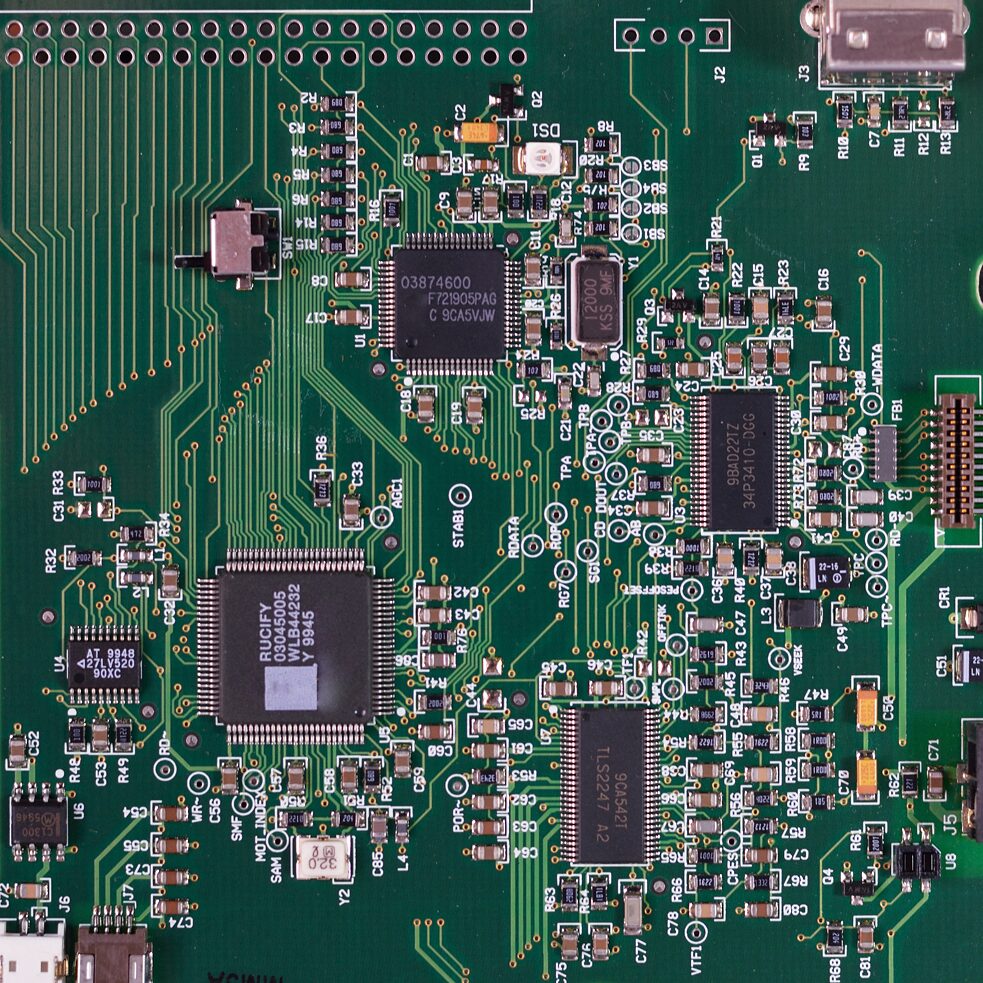How second language learning benefits from Big Data
Second language learning is driving some important futures questions: How will we communicate in space, on Mars, on the moon? Will chips in the brain help us communicate across languages? Do we need another Esperanto, or is English already our Esperanto?
The answer to that last question is: Not really – while English is one of the main languages for example on the International Space Station (ISS), Russian is equally important up there. English and Russian are the two main working languages of the ISS, however astronauts also report that many languages can be in use, depending on who is present in the space station (1).
Similar to the extinction of species, we are sadly losing an enormous number of minority languages and their cultures every year (2). However, there are many established major languages in the world now (3), and we will need to communicate across those, here on Earth and up amongst the stars. Modern language learning, often seen as a dying art, on the contrary will be a central concern for future generations – and we have Artificial Intelligence (AI) and machine learning on our side.
AI shaping future pedagogical approaches
Enhanced computational power and cloud storage have enabled AI to be utilised in diverse real-life language related applications, for example speech recognition and natural language processing on Siri (4) and other such smart phone functions (5). The central feature, as in all AI, is access to Big Data for machine learning. As Siri converses with us, it also collects data and prepares them for optimised further conversations, constructing and re-constructing functional AI algorithms that mimic human interactions (6). All this now happens on tiny chips, with new technologies like microfluidics which allow large-scale and automated data processing that is cost-effective in capturing Big Data (7).
 Small chips can capture big data in a cost-effective way today.
| © Pexels
Data mining of human speech like it is used in SIRI technology is also applied in second language learning. Specifically, the use of Big Data in machine learning leads to individualised item response and personalised learning in language learning apps apps like Duolingo, Babbel, and Rosetta Stone. In second language learning, such key possibilities in Artificial Intelligence are likely to shape future pedagogical approaches (8). Teachers in today’s schools are mandated to plan their lessons so that every student receives individual and differentiated support according to their needs (9). This sometimes-overwhelming task can be supported by the use of individualised item responses using language learning software that allows for personalised learning steps for every student (10).
Small chips can capture big data in a cost-effective way today.
| © Pexels
Data mining of human speech like it is used in SIRI technology is also applied in second language learning. Specifically, the use of Big Data in machine learning leads to individualised item response and personalised learning in language learning apps apps like Duolingo, Babbel, and Rosetta Stone. In second language learning, such key possibilities in Artificial Intelligence are likely to shape future pedagogical approaches (8). Teachers in today’s schools are mandated to plan their lessons so that every student receives individual and differentiated support according to their needs (9). This sometimes-overwhelming task can be supported by the use of individualised item responses using language learning software that allows for personalised learning steps for every student (10).
Personalised language learning
Such language learning technology powered by AI includes features for adaptive, personalised and spaced language learning (11, 12, 13), using algorithmic techniques and machine learning on those apps. By tracking individual student progress, apps like Duolingo then use drill and practice features to focus on areas that each individual user needs to improve, leading to individual progress optimization (14). This includes speech features, as speech recognition and chatbots that offer dialogue interfaces are now part of most advanced language learning apps (15, 16). And of course, chatting with the chatbox in your second language in turn allows the AI to learn more of the language, as robotic (machine) language learning is a key feature of many applications.
 Speech interaction can also take place via active immersion on home devices.
| © Pexels
Such speech interaction can also take place via active immersion on home devices (Alexa, Google Home etc). You can switch your Amazon Echo to respond in a variety of languages, effectively creating an AI practice partner in your own home. Via your Apple watch, you can do the same (17). and make it into a wearable technology that helps you learn a language. The Internet of Things and such wearable technology support the creation of realistic scenarios in which language learners can feel comfortable engaging in chat and becoming better prepared for social interaction in a second language (De la Guia et al, 2016).
Speech interaction can also take place via active immersion on home devices.
| © Pexels
Such speech interaction can also take place via active immersion on home devices (Alexa, Google Home etc). You can switch your Amazon Echo to respond in a variety of languages, effectively creating an AI practice partner in your own home. Via your Apple watch, you can do the same (17). and make it into a wearable technology that helps you learn a language. The Internet of Things and such wearable technology support the creation of realistic scenarios in which language learners can feel comfortable engaging in chat and becoming better prepared for social interaction in a second language (De la Guia et al, 2016).
Shaping language learning in schools
The future of language learning might thus be shaped in unexpected ways by AI. The possibilities for personalised learning in interaction with a computer or robotic communication partner to drill and practice features might free up the language teacher to spend more targeted interaction with smaller groups of students. From 28 students in a typical language class in junior high school nowadays, we might see language classes of 8-10 students who engage with a teacher twice a week, and spend another two lessons following their individualised optimal learning trajectories in a computer lab. As AI’s capabilities in recognising gestures, faces, and even emotional responses are ever evolving (18), such individualised learning will go far beyond linguistic item recognition and take into account your whole language learner identity.
 Future students might be following their individualised optimal learning trajectories in a computer lab.
| © Goethe-Institut
“Contingent robot learning” describes AI’s current frontier, the ability for autonomous unsupervised learning while being sensitive to the link between its actions and the consequences of its actions, called sensorimotor contingencies (19). Understanding intercultural differences when applying different languages will naturally be part of this evolution. Schools of the future are likely to be shaped by AI-driven technologies, both to personalise learning in and out of the classrooms and as the main tool to understand big student populations and their needs. And we will be wise to embrace this as a bonus!
Future students might be following their individualised optimal learning trajectories in a computer lab.
| © Goethe-Institut
“Contingent robot learning” describes AI’s current frontier, the ability for autonomous unsupervised learning while being sensitive to the link between its actions and the consequences of its actions, called sensorimotor contingencies (19). Understanding intercultural differences when applying different languages will naturally be part of this evolution. Schools of the future are likely to be shaped by AI-driven technologies, both to personalise learning in and out of the classrooms and as the main tool to understand big student populations and their needs. And we will be wise to embrace this as a bonus!
Similar to the extinction of species, we are sadly losing an enormous number of minority languages and their cultures every year (2). However, there are many established major languages in the world now (3), and we will need to communicate across those, here on Earth and up amongst the stars. Modern language learning, often seen as a dying art, on the contrary will be a central concern for future generations – and we have Artificial Intelligence (AI) and machine learning on our side.
AI shaping future pedagogical approaches
Enhanced computational power and cloud storage have enabled AI to be utilised in diverse real-life language related applications, for example speech recognition and natural language processing on Siri (4) and other such smart phone functions (5). The central feature, as in all AI, is access to Big Data for machine learning. As Siri converses with us, it also collects data and prepares them for optimised further conversations, constructing and re-constructing functional AI algorithms that mimic human interactions (6). All this now happens on tiny chips, with new technologies like microfluidics which allow large-scale and automated data processing that is cost-effective in capturing Big Data (7).
 Small chips can capture big data in a cost-effective way today.
| © Pexels
Data mining of human speech like it is used in SIRI technology is also applied in second language learning. Specifically, the use of Big Data in machine learning leads to individualised item response and personalised learning in language learning apps apps like Duolingo, Babbel, and Rosetta Stone. In second language learning, such key possibilities in Artificial Intelligence are likely to shape future pedagogical approaches (8). Teachers in today’s schools are mandated to plan their lessons so that every student receives individual and differentiated support according to their needs (9). This sometimes-overwhelming task can be supported by the use of individualised item responses using language learning software that allows for personalised learning steps for every student (10).
Small chips can capture big data in a cost-effective way today.
| © Pexels
Data mining of human speech like it is used in SIRI technology is also applied in second language learning. Specifically, the use of Big Data in machine learning leads to individualised item response and personalised learning in language learning apps apps like Duolingo, Babbel, and Rosetta Stone. In second language learning, such key possibilities in Artificial Intelligence are likely to shape future pedagogical approaches (8). Teachers in today’s schools are mandated to plan their lessons so that every student receives individual and differentiated support according to their needs (9). This sometimes-overwhelming task can be supported by the use of individualised item responses using language learning software that allows for personalised learning steps for every student (10).Personalised language learning
Such language learning technology powered by AI includes features for adaptive, personalised and spaced language learning (11, 12, 13), using algorithmic techniques and machine learning on those apps. By tracking individual student progress, apps like Duolingo then use drill and practice features to focus on areas that each individual user needs to improve, leading to individual progress optimization (14). This includes speech features, as speech recognition and chatbots that offer dialogue interfaces are now part of most advanced language learning apps (15, 16). And of course, chatting with the chatbox in your second language in turn allows the AI to learn more of the language, as robotic (machine) language learning is a key feature of many applications.
 Speech interaction can also take place via active immersion on home devices.
| © Pexels
Such speech interaction can also take place via active immersion on home devices (Alexa, Google Home etc). You can switch your Amazon Echo to respond in a variety of languages, effectively creating an AI practice partner in your own home. Via your Apple watch, you can do the same (17). and make it into a wearable technology that helps you learn a language. The Internet of Things and such wearable technology support the creation of realistic scenarios in which language learners can feel comfortable engaging in chat and becoming better prepared for social interaction in a second language (De la Guia et al, 2016).
Speech interaction can also take place via active immersion on home devices.
| © Pexels
Such speech interaction can also take place via active immersion on home devices (Alexa, Google Home etc). You can switch your Amazon Echo to respond in a variety of languages, effectively creating an AI practice partner in your own home. Via your Apple watch, you can do the same (17). and make it into a wearable technology that helps you learn a language. The Internet of Things and such wearable technology support the creation of realistic scenarios in which language learners can feel comfortable engaging in chat and becoming better prepared for social interaction in a second language (De la Guia et al, 2016).Shaping language learning in schools
The future of language learning might thus be shaped in unexpected ways by AI. The possibilities for personalised learning in interaction with a computer or robotic communication partner to drill and practice features might free up the language teacher to spend more targeted interaction with smaller groups of students. From 28 students in a typical language class in junior high school nowadays, we might see language classes of 8-10 students who engage with a teacher twice a week, and spend another two lessons following their individualised optimal learning trajectories in a computer lab. As AI’s capabilities in recognising gestures, faces, and even emotional responses are ever evolving (18), such individualised learning will go far beyond linguistic item recognition and take into account your whole language learner identity.
 Future students might be following their individualised optimal learning trajectories in a computer lab.
| © Goethe-Institut
“Contingent robot learning” describes AI’s current frontier, the ability for autonomous unsupervised learning while being sensitive to the link between its actions and the consequences of its actions, called sensorimotor contingencies (19). Understanding intercultural differences when applying different languages will naturally be part of this evolution. Schools of the future are likely to be shaped by AI-driven technologies, both to personalise learning in and out of the classrooms and as the main tool to understand big student populations and their needs. And we will be wise to embrace this as a bonus!
Future students might be following their individualised optimal learning trajectories in a computer lab.
| © Goethe-Institut
“Contingent robot learning” describes AI’s current frontier, the ability for autonomous unsupervised learning while being sensitive to the link between its actions and the consequences of its actions, called sensorimotor contingencies (19). Understanding intercultural differences when applying different languages will naturally be part of this evolution. Schools of the future are likely to be shaped by AI-driven technologies, both to personalise learning in and out of the classrooms and as the main tool to understand big student populations and their needs. And we will be wise to embrace this as a bonus!
